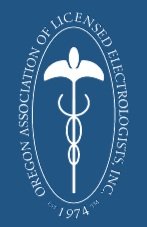
Navigating Insurance
Are you interested in accepting health insurance from clients but unsure where to begin?
The 3 pathways to accepting insurance
PATHWAY 1: DIY Training
DIY Training
Some electrologists have already done the groundwork and graciously created guides to make it easier for you (see below).
Good to know: Once a provider connects with an insurance company, including the Medicaid CCOs, there are resources within those organizations for guiding people with applications and credentialing. Once through that, there are further resources to help people learn how to bill.
Knowing what to ask for is important in order to connect you to the right people; ask for provider training and a provider service representative (whose job it is to support providers in any issues that come up). You can also ask for the gender affirming care team, or gender pathways (depending on the organization).
DIY Training Documents
CLICK TO VIEW PRESENTATION: Health Insurance Coverage and Access to Electrolysis for Transgender and Gender-Minority Patients
- Courtesy of Everett Redente & Madeline Vucovich
For more Trans Affirming Care resources, Standards of Care, Care Coordination, Info on House Bill 2002, etc, Visit: LGBTQ2+ Resources
PATHWAY 2: Formal Training
Formal Training
Key Concepts and Considerations
Credentialing: The process of being approved by insurance companies to provide services. This involves setting up your CAQH profile, obtaining an NPI, and understanding insurance contracts.
Insurance Contracts: Understanding your contracts with insurance companies is crucial for accurate billing and understanding reimbursement rates.
Billing: Submitting claims to insurance companies for payment. This involves understanding CPT codes, diagnostic codes, and other coding requirements.
Practice Management Software: Programs that help with billing, coding, and claim submission, making the process easier and reducing errors.
Finding Courses and Webinars
Centers for Medicare & Medicaid Services (CMS): Offers free, self-paced web-based training (WBT) courses on various healthcare topics, including claims processing.
AAPC has many courses and webinars, here are a couple that we found.
When looking for training, use the Key Concepts and Considerations listed above as search terms (credentialing, insurance contracts, billing, and practice management software).
PATHWAY 3: Outsourcing
Outsourcing
For those of us that don’t have the bandwidth for learning and executing a new discipline, or are simply not good at navigating the complexities of health insurance, there are companies that offer full service medical billing.
They provide credentialing, insurance contracts, billing, prior authorizations, client co-pays, collections, and more.
A cursory Google search will bring up many medical billing services. We are vetting one that is located in Oregon and came highly recommended by a trusted associate and LGBTQ2+ advocate.
The experiment is still ongoing. So far:
One of the OALE board members is serving as the guinea pig for this experiment.
After an initial phone call, the owner came to my office for a meeting and had already done some legwork (talking to MODA).
We had a thorough conversation, she answered my many questions and listened to the specifics of our industry, profession and the types of clients we work with.
I am currently completing paperwork to be on-boarded so that she may get started on credentialing with 2 insurance providers to start (I’m going with Moda and Kaiser).
The owner is always responsive to communication, helping to walk me through the finer details and educate me where needed.
